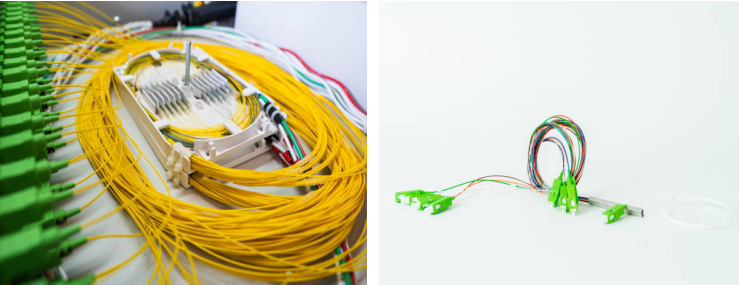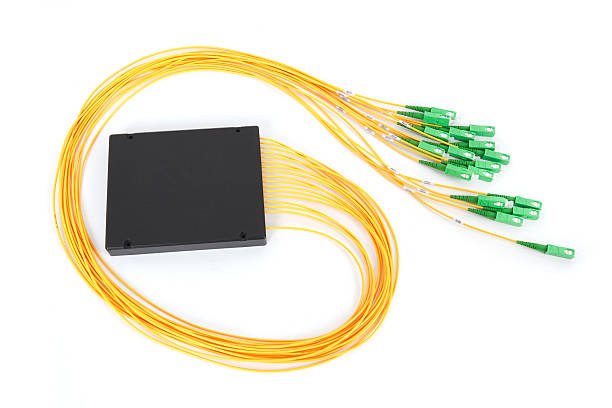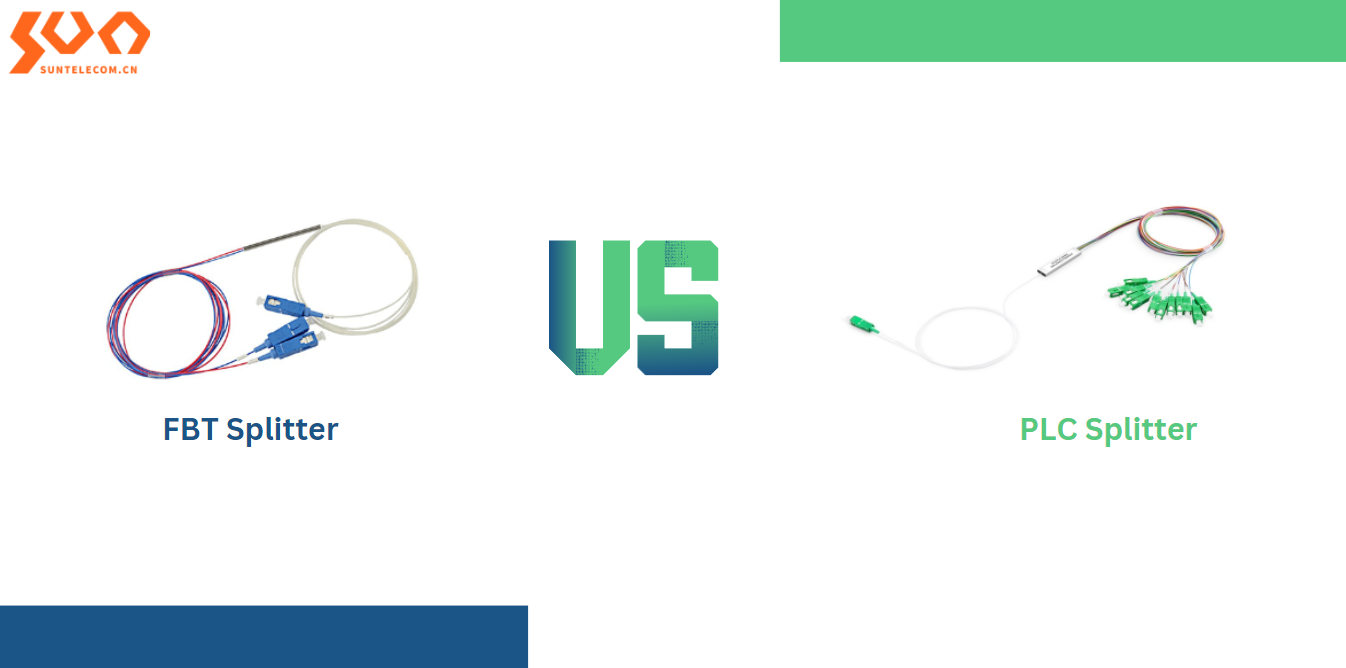PM (Polarization Maintaining) PLC (Planar Lightwave Circuit) splitter plays a vital role in passive optical network and fiber optic amplifier applications by maintaining the polarization of the input optical signal and providing low insertion loss and high polarization extinction ratio over a wide wavelength range. This article will introduce the PM PLC splitter.
What is a PM PLC Splitter?
PM PLC splitter is an optical power management device that uses silica optical waveguide technology. It splits a single input signal into multiple output signals or combines multiple incoming optical fiber inputs into one output while maintaining the polarization state of the light. In addition, it is available in configurations with 2, 4, 8, and 16 output channels, 1xN and 2xN, ABS box, bare fiber, blockless fiber, rack-mount, LGX box PLC splitter, etc.

How Does PM PLC Splitter Work?
PM PLC splitter employs silica optical waveguide technology to distribute optical signals from the CO (Central Office) to multiple premise locations. It has a PLC chip, a single-channel PM fiber array as the input end, and a multi-channel PM fiber array as output ports. The fiber arrays are coupled on both ends of the PLC chip. The PLC chip is one key component of a fiber PLC splitter. It is available in 1xN (N=2, 4, 8, 16, 32, 64) and 2xN (N=2, 4, 8, 16, 32, 64) splitting ratios. PM PLC splitter ensures that the polarization of linearly polarized light waves launched into the fiber is maintained during propagation, with minimal or no cross−coupling of optical power between the polarization modes.
Why is PM PLC Splitter So Important?
PM PLC splitter plays an important role in passive optical networks (like EPON, GPON, BPON, FTTx, FTTH, etc.) by allowing a single PON Interface to be shared among many subscribers. In addition, it enables the transmission power at each splitter output port to be the same, which simplifies the network design. It provides a low-cost distribution solution with high stability and reliability. PM PLC splitters can offer a splitting ratio of up to 1x64, which is generally higher than the splits of FBT splitters. It's mainly used for various connection and distribution boxes or network cabinets.
Features and Benefits
PM PLC splitter provides the following features and benefits:
l Low insertion loss, polarization dependence, and cost
l High isolation, extinction ratio, and return loss
l High reliability and stability
l Good channel-to-channel uniformity and compact size
l Wideband and operating temperature
Applications
PM PLC splitter is used in a fiber laser, fiber optic sensing, testing instruments, coherent optical transmission, fiber optic amplifiers, EDFA, CATV, FTTH, PON, LAN/WAN, power monitoring systems, data centers, aerospace, military, etc.

Conclusion
PM PLC splitter is a critical optical power management device in PON, coherent optical transmission, and fiber optic sensing applications. It provides a high extinction ratio, stability, and low insertion loss and cost. As the demand for high-speed connectivity continues to grow, PM PLC splitters will continue to play a crucial role in meeting the ever-increasing network requirements.
Sun Telecom specializes in providing one-stop total fiber optic solutions for all fiber optic application industries worldwide. Contact us if you have any needs.
Questions
1. What is PM PLC Splitter?
2. What are the Applications of PM PLC Splitters?
3. What are the Benefits of Using a PM PLC Splitter?
4. How Does PM PLC Splitter Work?
5. How to Choose a PM PLC Splitter?


 Position :
Home>
News & Tutorial
>Products
Position :
Home>
News & Tutorial
>Products



 Position :
Home
>Products
Position :
Home
>Products





 ics@suntelecom.cn
ics@suntelecom.cn  +86 18964888554
+86 18964888554 Building No.145, Lane 666 Xianing Road, Jinshan Industrial Zone, Shanghai 201506, China
Building No.145, Lane 666 Xianing Road, Jinshan Industrial Zone, Shanghai 201506, China